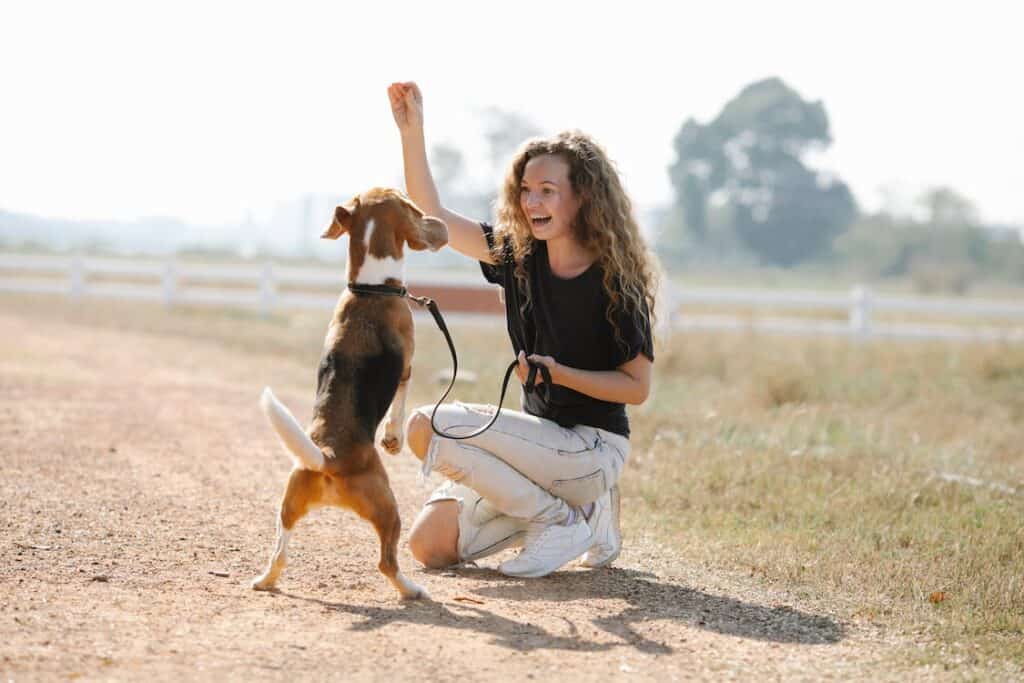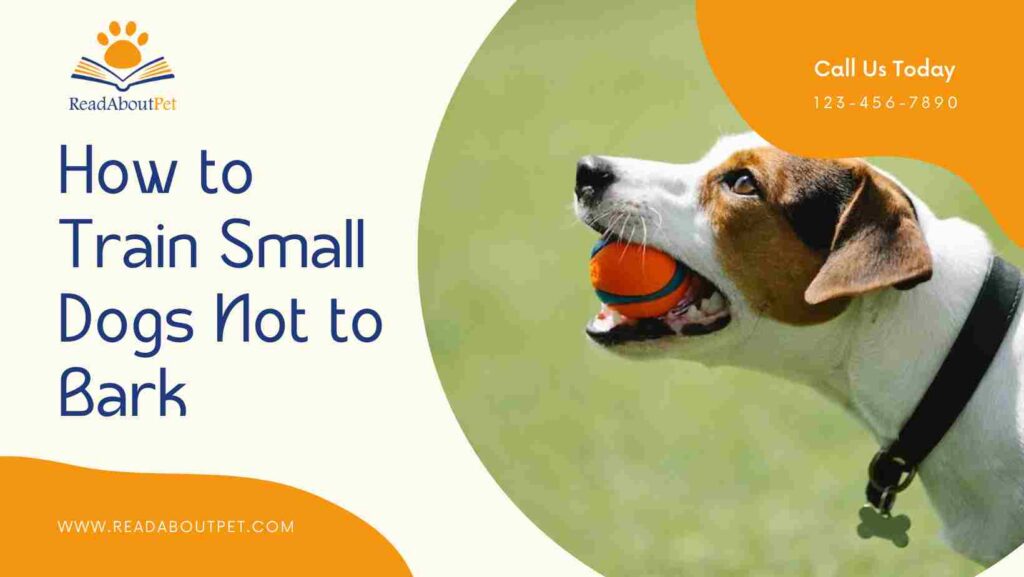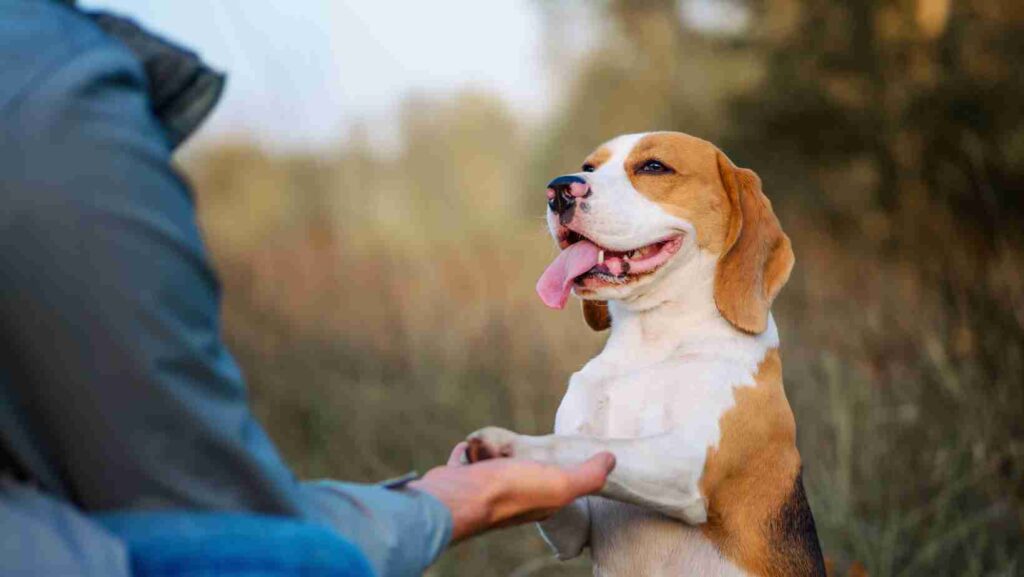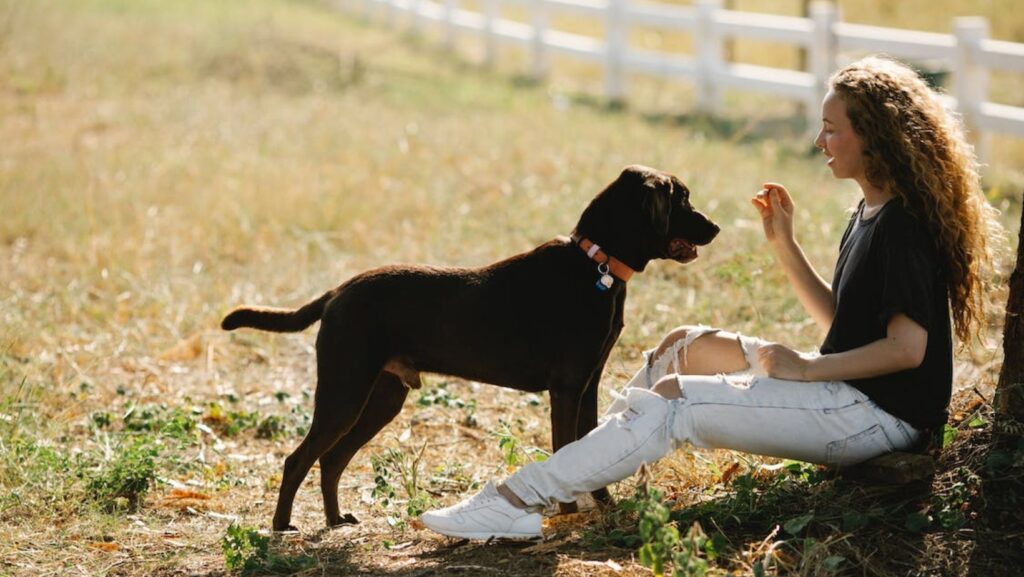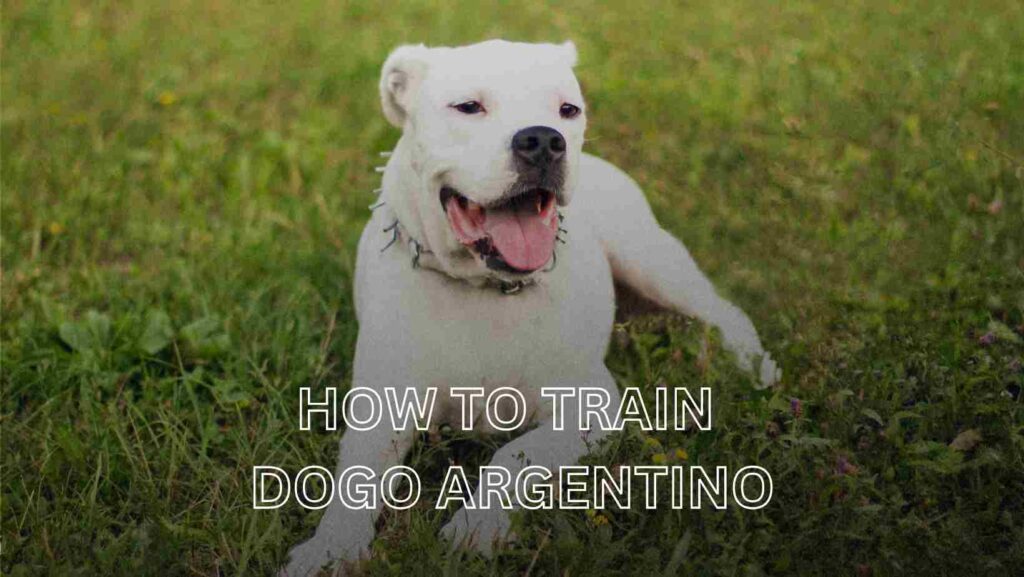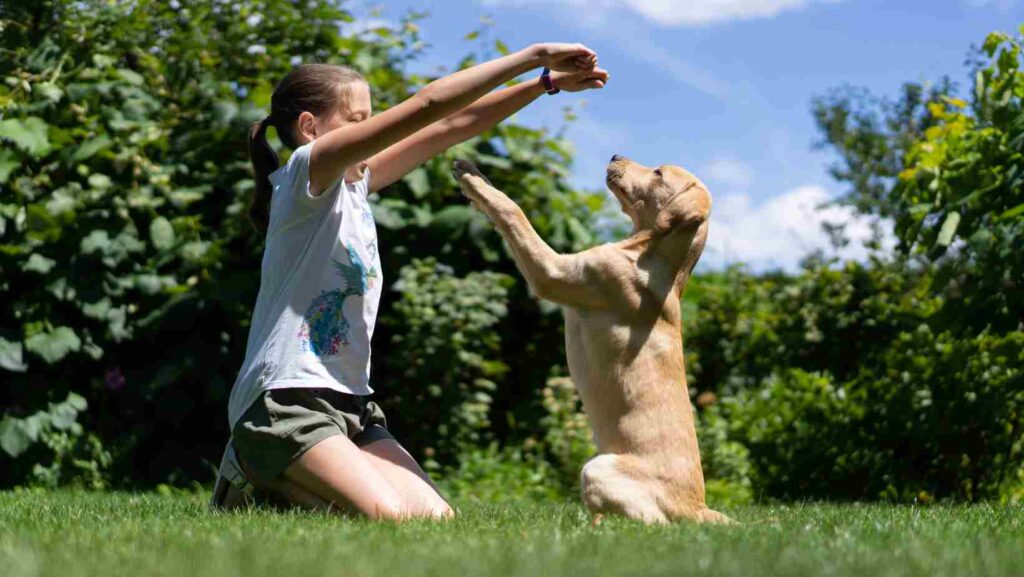Are you tired of constantly pulling your dog on walks? Does your furry friend take you for a ride instead of the other way around? Loose leash training is the answer to your problems. In this article, we will explore loose leash training, its benefits, and how long it takes to train your dog to walk on a leash.
What is Loose Leash Training?
Loose leash training teaches your dog to walk on a loose leash without pulling or tugging. It involves teaching your dog to walk beside you without any tension on the leash.
Benefits
Loose leash training has many benefits for both you and your dog. Here are some of the key advantages:
- Improved safety
One of the biggest benefits of loose leash training is improved safety. A dog that pulls on the leash can easily escape their owner and run into traffic or other dangerous situations. This training can help keep your dog safe by teaching them to stay close to you and follow your commands.
- Better behavior
Loose leash training can also help improve your dog’s behavior. Dogs constantly pulling on the leash may become more aggressive or anxious, making it difficult to learn and follow commands. Teach your dog to walk calmly on a loose leash can improve its overall behavior and reduce stress and anxiety.
- Increased exercise
Loose leash training can also increase your dog’s exercise levels. Walking on a loose leash requires your dog to stay close to you and walk steadily, providing a great workout for both of you. This can help improve your dog’s overall health and fitness and strengthen your bond with them.
- Better communication
Finally, loose-leash training can help improve communication between you and your dog. Establishing yourself as the leader and teaching your dog to follow your commands can create a stronger and more positive relationship. This can lead to better behavior, increased trust, and a deeper bond between you and your furry companion.
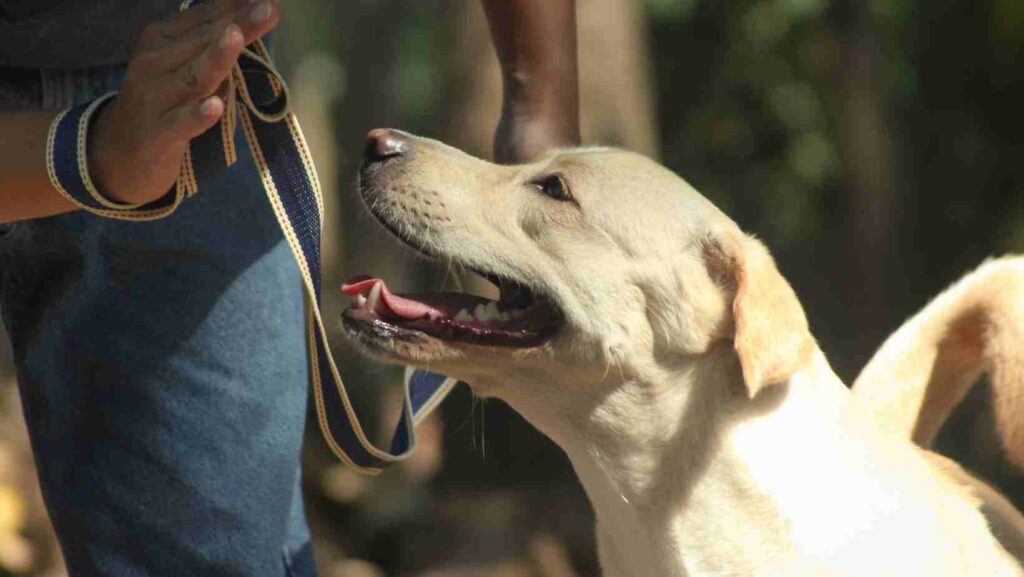
How to Train Your Dog to Walk on a Loose Leash: 5 steps guide
It is important to start with basic commands when beginning loose leash training. These commands will help establish you as the leader and set the foundation for training. Some common basic commands include “sit,” “stay,” “come,” and “heel.”
Once your dog has learnt the basic commands, you can begin with loose leash training. The first step is to use a shorter leash to keep your dog closer to you. As your dog becomes comfortable, you can gradually lengthen the leash.
During training, it is important to remain calm and patient. If your dog begins to pull on the leash, stop walking and wait for your dog to calm down. Avoid yanking or jerking the leash, as this can cause discomfort and confusion for your dog.
Below are some essential steps to follow for effective training:
1- Start with Basic Obedience Training
Before teaching your dog loose leash walking, you need to establish basic obedience commands like “sit,” “stay,” and “come.” This will help build trust and strengthen the bond between you and your dog. Dogs are more likely to obey commands from their owners whom they trust.
2- Use Positive Reinforcement Techniques
Positive reinforcement is an effective technique to encourage good behavior in dogs. Reward your dog with treats, praise, and affection when he walks by your side without pulling on the leash. Your dog will soon associate loose leash walking with good behavior and rewards.
3- Use a Short Leash
Using a short leash gives you more control over your dog’s movements. A too long leash gives your dog more freedom to pull and wander around. A short leash will keep your dog closer to you and prevent pulling.
4- Be Consistent
Consistency is essential when training your dog to walk on a loose leash. Train your dog daily, using the same commands and techniques. The more consistent you are, the quicker your dog will learn.
5- Be Patient
Patience is key when training your dog. Do not rush the process; remember that every dog learns at his own pace. Some dogs may take longer than others to learn loose leash walking.
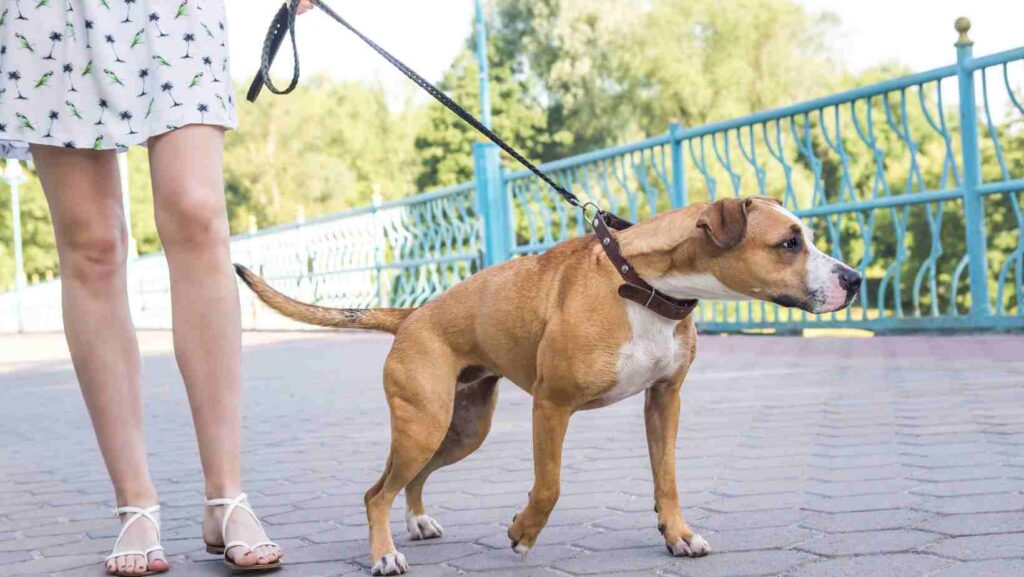
How Long Does Loose Leash Training Take?
The length of loose leash training depends on several factors, such as your dog’s age, breed, and temperament. On average, it takes around 2 to 4 weeks of consistent training to see results. However, some dogs may take longer, while others may learn faster.
Factors That Affect the Length of Training
As mentioned earlier, several factors affect the length of loose leash training. These include your dog’s age, breed, and temperament, as well as your consistency and dedication to the training process. Younger dogs and certain breeds like hunting dogs, may take longer to train. Moreover, dogs with a high prey drive or stubborn temperament may require more time and effort. Here is a detail:
- Age: Puppies may be easier to train than adult dogs as they are more open to learning new things. However, older dogs can also learn new behaviors with patience and consistency.
- Breed: Some breeds are more independent and strong-willed than others, making loose leash training more challenging. However, any breed can learn to walk calmly on a leash with the right techniques.
- Previous experience: If your dog has a history of pulling on the leash, it may take longer to break the habit. On the other hand, if your dog has never been walked on a leash before, it may be more receptive to learning.
- Generally, training your dog to walk on a loose leash can take anywhere from a few weeks to a few months. However, it’s important to remember that dogs are different and may learn at their own pace. The key is to be patient and consistent with your training.
Tips and Tricks for Effective Dog Walking
Here are some tips and tricks that can help you train your dog to walk on a loose leash:
- Use positive reinforcement: Reward your dog with treats, praise, and affection when they walk calmly on a loose leash. This will encourage them to repeat the behavior.
- Start small: Begin by practicing in a quiet, low-distraction environment, such as your backyard. Once your dog has mastered walking on a loose leash in this setting, gradually increase the difficulty by practicing in more distracting environments, such as a park or a busy street.
- Use a front-clip harness: A front-clip harness can help discourage pulling by redirecting your dog’s attention to you. When your dog pulls on the leash, the harness gently turns them back towards you.
- Be consistent: Use the same cues and rewards every time you practice loose-leash walking. This will help your dog understand what is expected of them.
- Keep training sessions short: Dogs have short attention spans, so it’s important to keep training sessions short and sweet. Aim for 5-10 minutes per session, and practice a few times a day.
- Avoid punishment: Punishing your dog for pulling on the leash can worsen the behavior. Instead, focus on rewarding good behavior and redirecting your dog’s attention when they start to pull.
- Be patient: Loose leash training can be a slow process, but staying patient and consistent is important. Remember to praise and reward your dog for its progress, even if it’s small.
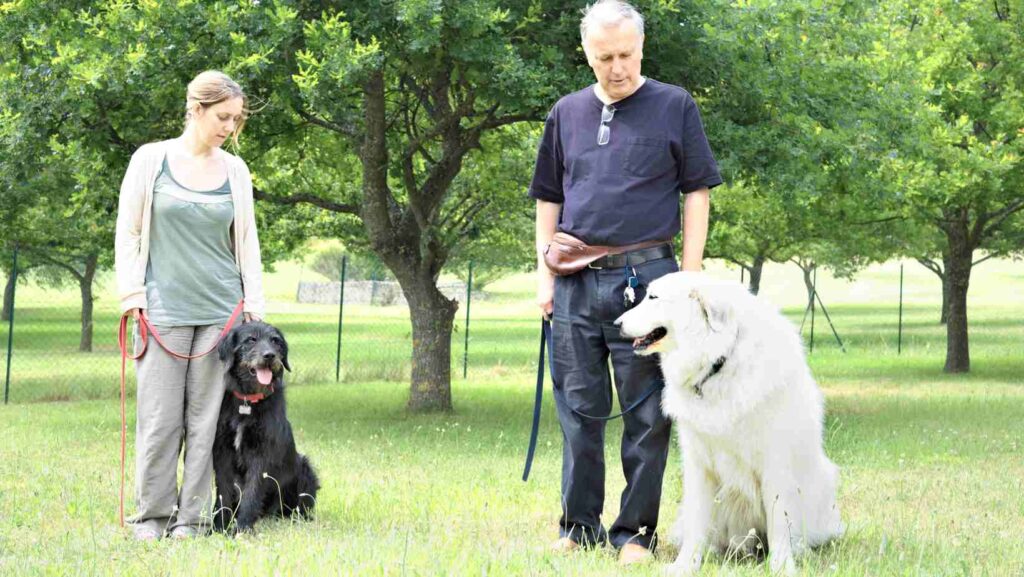
Common Mistakes to Avoid
During loose leash training, it’s essential to avoid common mistakes that can hinder your progress. These include:
5 Common Mistakes to Avoid During Loose Leash Training
Loose leash training can be challenging, but it’s important to avoid making common mistakes that hinder your progress. Here are five mistakes to avoid during loose leash training:
- Allowing Your Dog to Pull on the Leash
Allowing your dog to pull on the leash during training is a common mistake that can make it more difficult to achieve a loose leash. When your dog pulls, simply stop walking and wait for them to calm down before continuing. This will teach your dog that pulling will not get them what they want.
- Using Excessive Force or Punishment
Using excessive force or punishment can cause your dog to become anxious or fearful. This can make training more difficult and even lead to aggression. Instead, use positive reinforcement techniques such as treats, praise, and affection to encourage good behavior.
- Inconsistency in Training Methods or Commands
Inconsistency in training methods or commands can confuse your dog and make it more difficult for them to learn. Be consistent in your commands and training methods, and ensure everyone in the household is on the same page.
- Not Providing Enough Positive Reinforcement
Not providing enough positive reinforcement for good behavior can make it more difficult for your dog to understand what you want from them. Reward your dog for walking calmly on a loose leash, and use treats and praise to reinforce good behavior.
- Expecting Results Too Quickly
Finally, it’s important to be patient and realistic during loose-leash training. Your dog may take some time to learn and master this skill, so don’t expect results too quickly. With consistency and positive reinforcement, your dog will eventually learn to walk calmly on a loose leash.
Conclusion
Loose leash training effectively improves your dog’s behavior on walks and strengthens your relationship. It takes time and patience, but the benefits are well worth it. Remember to be consistent, use positive reinforcement, and avoid common mistakes during training. You and your furry friend can enjoy peaceful and enjoyable walks together with dedication and effort.
FAQs
Can I use a shock collar for loose leash training?
No, using a shock collar for loose leash training is not recommended. It can cause your dog pain and stress, leading to further behavioral problems.
How often should I train my dog for loose leash walking?
Training your dog for 10-15 minutes per session is recommended, at least twice a day. Short and frequent sessions are more effective than long and infrequent ones.
What measures should I take if my dog pulls on the leash during walks?
If dog pulls on the leash during walking, stop and wait for them to calm down. Once they’re calm, resume walking and reward them for walking beside you without pulling.
Can I use a harness for loose leash training?
Yes, a harness can be used for loose leash training. However, choose a suitable harness that does not cause discomfort or restrict movement.

